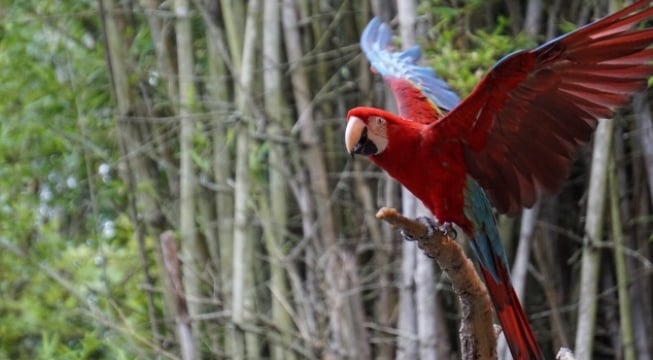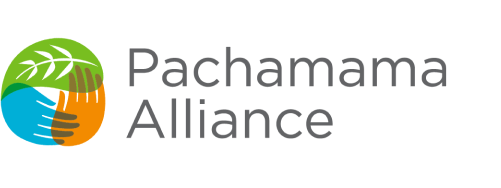
“You never change things by fighting the existing reality. To change something, build a new model that makes the existing model obsolete.”
― R. Buckminster Fuller
Many cultures today are based on never-ending development, an emphasis on the rights of the individual, and capitalism. Many of us are taught from an early age that materialism and consumption are necessary aspects of life. There is an ever-present dualism which separates society from Nature.
The idea of Buen Vivir is an alternative to this development-centered approach. Buen Vivir is based on the belief that true well-being (“the good life”) is only possible as part of a community. The good of the community is placed above that of the individual. Furthermore, this is community in an expanded sense; it includes Nature, plants, animals, and the Earth. Nature itself must be cared for and respected as a valuable part of the community. The land cannot be owned; it should be honored and protected.
Why Buen Vivir Emerged
Buen Vivir began to develop in South America for a few specific reasons:
1. Depleted Natural Resources
The development projects implemented by governments and multilateral development banks were clearly not in the best interest of the people. While these development projects promised to bring increased wealth to South American countries, they instead depleted the natural resources of the area and increased poverty levels.
2. Indigenous Example
It became obvious that the Indigenous people who had been living for centuries in a sustainable manner did not require the development that was deemed so essential by capitalistic philosophies. There must be alternative ways of living, it was reasoned, which did not include modern development and capitalism, and which could be adopted by greater numbers of people.
3. Climate Change
In the face of climate change and the rapid destruction of the environment, particularly in the Amazon region, there is wisdom to be found in Buen Vivir which rejects the anthropocentric perspective of many cultures, and places a high value on the importance of preserving, protecting, and respecting Nature. Human beings are no longer the only ones who have values and rights.
Buen Vivir Today
The concept of Buen Vivir was incorporated into the Ecuadorian constitution in 2008 and the Bolivian constitution in 2009. It is interesting to examine the differences between the two. In Ecuador’s constitution, Buen Vivir is a set of rights including health, education, freedom, participation, and the Rights of Nature or Pachamama. This concept gives Buen Vivir a solid legal framework. In Bolivia’s constitution, Buen Vivir was interpreted as one of a set of principles such as dignity, social and gender equity, and social justice; this places them alongside the classic third generation human rights.
Indigenous ways of living and interpreting the world are an important part of Buen Vivir. It has been linked to Sumak Kawsay of the Quechua Indigenous people of Ecuador; shiir waras of the Shuar people of Ecuador; suma qamana of the Aymara people of Bolivia; and nandereko of the Guarani people of Bolivia.
These Indigenous nations and communities have existed for centuries, living sustainably and in many cases without a need for money or traditional jobs. Work is shared; food is distributed to those who need it most; the only resources taken from the environment are those which are needed for survival. Nature is not harmed and is allowed to regenerate in order to enhance the lives of future generations. The non-human life forms (animals, plants, the Earth, spirits of the ancestors) have their own free will and feelings, and are respected as such.
Buen Vivir is a radical departure from the current predominant worldview. It can be interpreted differently based on the separate needs of each community. At its core, it allows us to see the world through entirely new eyes. The classic problems from which there appears to be no escape—the need for more control over our lives, the separation of ourselves from Nature, the urge to buy more and own more, the desire to move forward in our technology and our society’s development—fall to the side as we embrace the simple yet groundbreaking concepts that make up Buen Vivir.
How We Can Shift Toward Buen Vivir
Interestingly, some of the paths to Buen Vivir are already becoming trends in many cultures:
- Increased popularity of austere living. This is practiced by those who embrace a zero waste lifestyle, the tiny house movement, and a return to natural, organic, vegan, vegetarian, and raw foods.
- Environmental accounting and tax reforms. Many governments offer tax benefits for energy efficiency. Green or eco-friendly corporations are growing in popularity. The carbon tax, already implemented in some countries, creates pricing that reflects the true cost of products that harmed the environment during production, shipping, or because of the materials used.
- Sustainable degrowth strategies. “Degrowth”—or a slow down of consumption—is a necessary and unavoidable part of any reasonable plan to curb global warming. The answer is not just to find alternative energy sources, but also to reduce energy use, and thus reduce the depletion of natural resources. This will occur not only from increasing efficiency (such as switching to electric cars) but more importantly by promoting truly sustainable alternatives (such as walking and biking instead of driving cars).
- Smaller, local production. Instead of importing and exporting products to and from distant countries, each region should produce only what they need. Natural resources should be extracted and utilized only to the extent of regional demand. This is just beginning to occur. More families are growing their own food. Small, local, often organic farms are sought out for food products instead of buying from the national chain grocery store. But this movement has a long way to go, and the transformation would be key to the increased acceptance of Buen Vivir.
A Struggle to Incorporate Buen Vivir
Not surprisingly, the principles of Buen Vivir are difficult to carry out in today’s economic and political environment. The governments of Ecuador and Bolivia are struggling to reconcile their goals to lead social change with the day-to-day financial needs of the country and the demands for development from large corporations.
The extraction of natural resources, such as lithium in Bolivia and oil in Ecuador, are at the forefront of the Buen Vivir debate. The Yasuni ITT Initiative in Ecuador is a case in point. The ITT area in Yasuni National Park is a highly biodiverse region of the Amazon rainforest and home to Indigenous peoples as well as huge numbers of plant and animal species found nowhere else on the planet. Ecuador developed a plan in 2007 to keep the oil under Yasuni in the ground if sufficient funds were raised internationally. When the funds they hoped for did not come in, Ecuadorean President Rafael Correa canceled the ITT Initiative in 2013.
The Possibilities of Buen Vivir
But despite these difficulties, Buen Vivir is a visionary concept, a portal into the next era of great social change. It opens our eyes to what could be possible, and positions us to reach a greater understanding of our own human potential.
Eduardo Gudynas, an expert on the study of Buen Vivir, states:
“When Buen Vivir criticizes development, it also questions the very foundations of modernity … It helps us see the limits of current development models and it allows us to dream of alternatives that until now have been difficult to fulfill.”


